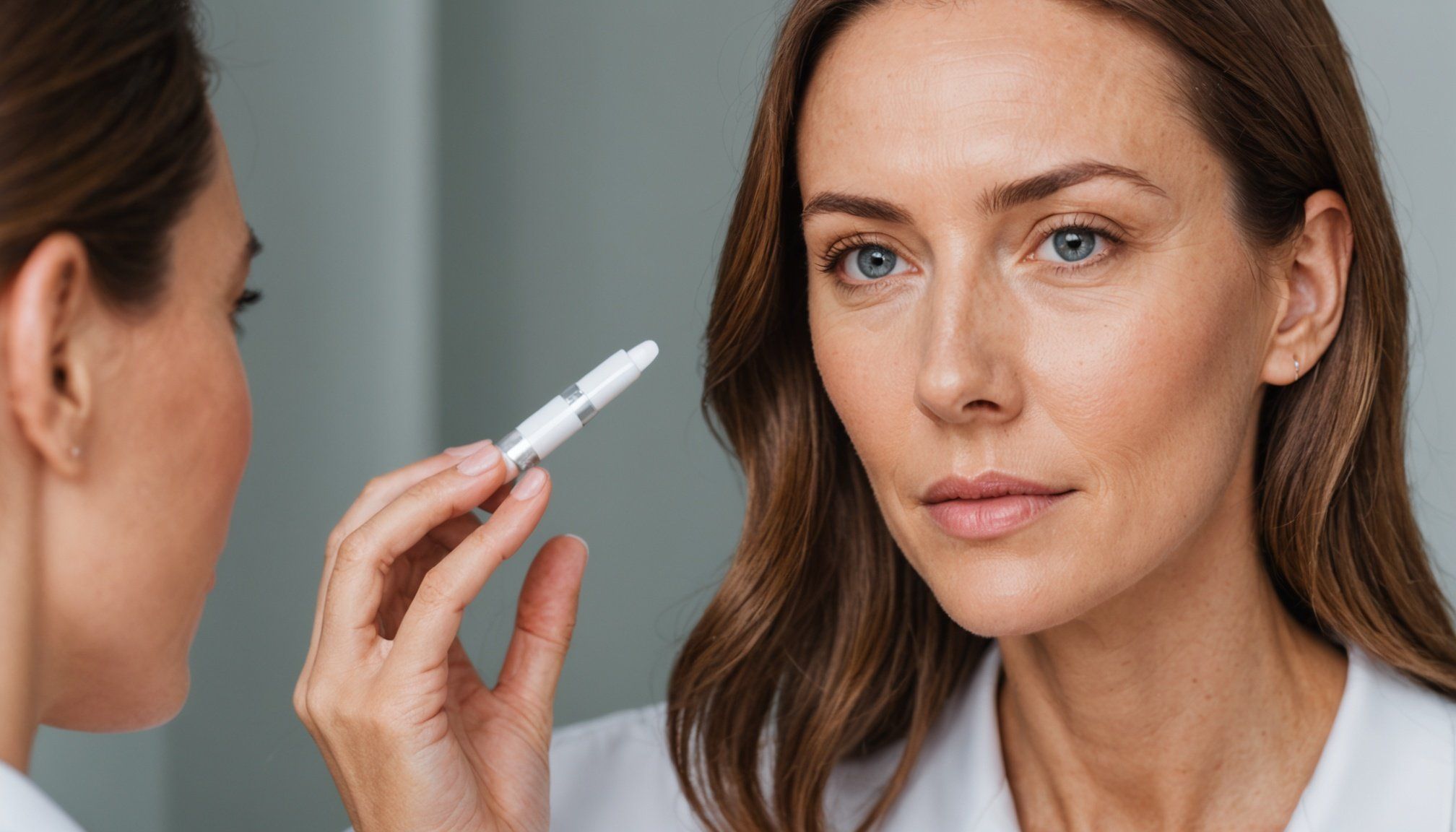Unlocking the Secrets to Safe Retinoid Use in Your Anti-Aging Skincare Routine
Understanding Retinoids: The Powerhouse of Anti-Aging
Retinoids, derivatives of vitamin A, are widely regarded as some of the most effective ingredients in anti-aging skincare. They have been proven to reduce wrinkles, promote keratinocyte proliferation, enhance epidermal barrier function, and protect collagen. However, their use often comes with a caveat: skin irritation, dryness, and reduced consumer tolerance.
“Retinoids have many important functions throughout the body, including in vision, regulation of skin proliferation and differentiation, growth of bone tissue, immune function, and male fertility,” explains the Wikipedia entry on retinoids[3].
In the same genre : The Ultimate Guide to Keeping White Sneakers Flawless: Expert Tips for Immaculate Cleaning and Maintenance
The Challenges of Using Retinol and Other Retinoids
Retinol, a common over-the-counter retinoid, and its prescription-strength counterpart, tretinoin (Retin A), are known for their efficacy but also for their potential to cause irritation.
“Retinoids such as retinol and Retin A (tretinoin) are very exfoliating. Glycolic acid also exfoliates the skin, which is why it’s tricky to combine these wonderful and effective anti-aging ingredients,” notes Dr. Bailey in her blog on combining glycolic acid and retinoids[2].
Also to read : Mastering Negotiation Stress: Proven Tactics for Thriving in High-Stakes Business Deals
Here are some key challenges associated with using retinoids:
- Skin Irritation: Retinoids can cause redness, itching, and dryness, especially in the initial stages of use.
- Sensitivity: Some people may find retinoids too harsh, especially when combined with other exfoliating ingredients like glycolic acid or vitamin C.
- Pregnancy and Breastfeeding: Oral retinoids and even some topical retinoids are contraindicated during pregnancy and breastfeeding due to potential harmful effects on the fetus or baby[3].
Alternatives and Innovations: The Rise of SME
Given the limitations of traditional retinoids, researchers have been seeking safer and more effective alternatives. One such innovation is the Silybin-Encapsulated Liposomal formulation (SME), derived from milk thistle.
“SME demonstrated no cytotoxic effects in vitro and showed minimal activation of RARγ compared to retinol, which caused excessive activation, and bakuchiol, which had moderate activation,” highlights a recent study on SME[1].
Here’s a comparison of SME with retinol and bakuchiol:
| Ingredient | RARγ Activation | Cytotoxicity | Collagen Production | Hyaluronic Acid Production | Skin Irritation |
|---|---|---|---|---|---|
| Retinol | High | Low | Increases | Increases | High |
| Bakuchiol | Moderate | High at higher concentrations | Reduces Collagen I | Limited | Moderate |
| SME | Minimal | No | Increases Collagen I and III | Increases | Low |
How to Use Retinoids Safely in Your Skincare Routine
To maximize the benefits of retinoids while minimizing the risks, here are some practical tips:
Start Slowly
Begin with a lower concentration and gradually increase as your skin becomes more tolerant. This helps in reducing the initial irritation.
Choose the Right Product
Opt for products that combine retinol with soothing ingredients like green tea antioxidants or ferulic acid, which can help mitigate irritation. For example, Dr. Dennis Gross’s Advanced Retinol + Ferulic Intense Wrinkle Cream is designed to provide retinol results without irritation[4].
Use it at the Right Time
Apply retinoid products at night, as they can make your skin more sensitive to the sun. Always follow up with a broad-spectrum sunscreen in the morning.
Be Gentle
Avoid using retinoids with other exfoliating products like glycolic acid or vitamin C on the same day, especially if you have sensitive skin.
Moisturize
Keep your skin well-moisturized to counteract the drying effects of retinoids. Look for products that contain hyaluronic acid, which helps in retaining moisture.
Combining Retinoids with Other Anti-Aging Ingredients
Combining retinoids with other anti-aging ingredients can enhance their benefits but requires careful planning.
Glycolic Acid and Retinoids
“Glycolic acid and retinoids can be used together, but it’s tricky. Glycolic acid has an acidic pH that can be irritating to exfoliated skin,” advises Dr. Bailey[2].
Here are some tips for combining glycolic acid and retinoids:
- Alternate Days: Use glycolic acid one day and retinoids the next to avoid over-exfoliation.
- Choose Gentle Formulations: Opt for lower concentrations of glycolic acid and retinoids to minimize irritation.
- Use Soothing Products: Incorporate soothing products like moisturizers or serums with antioxidants to help calm the skin.
Vitamin C and Retinoids
Vitamin C is a powerful antioxidant that can enhance the anti-aging benefits of retinoids but should be used carefully.
“Combining a retinoid like Retin A or retinol with glycolic acid and vitamin C brings powerful anti-aging benefits. However, vitamin C is fragile and needs to be used alone, not layered with an AHA or retinoid,” suggests Dr. Bailey[2].
Here’s how you can incorporate vitamin C into your routine:
- Use Vitamin C in the Morning: Apply vitamin C products during the day to help protect your skin from environmental stressors.
- Avoid Layering: Do not layer vitamin C with retinoids or glycolic acid to prevent irritation.
Real-Life Examples and Success Stories
Many individuals have successfully incorporated retinoids into their skincare routines with positive results.
For instance, Dr. Bailey shares her extensive experience with using retinoids and glycolic acid together: “I’ve successfully worked these ingredients together into thousands of skin care routines in my dermatology practice for over 35 years. I’ve also used them all on my own complexion for over 40 years”[2].: Making Retinoids Work for You
Retinoids are powerful tools in the fight against aging skin, but they require careful use to maximize their benefits while minimizing their risks.
By understanding the different types of retinoids, their potential side effects, and how to combine them with other anti-aging ingredients, you can create a skincare routine that helps you achieve healthier, more youthful-looking skin.
Here are some final tips to keep in mind:
- Consult a Dermatologist: If you’re new to retinoids or have sensitive skin, consult a dermatologist for personalized advice.
- Be Patient: It may take some time to see the full benefits of retinoids, so be patient and consistent with your skincare routine.
- Monitor Your Skin: Keep an eye on how your skin reacts and adjust your routine accordingly.
With the right approach, retinoids can be a game-changer in your anti-aging skincare routine, helping you to reduce fine lines, wrinkles, and other signs of aging while maintaining the health and beauty of your skin.








